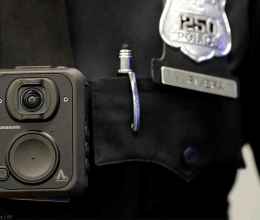Today, the LA Times reported that “the number of cases with unanalyzed fingerprint evidence has more than doubled in the last two years” — to 5,455 — “hampering efforts to solve thousands of burglaries, thefts and other property crimes.”

LAPD says the delays are due to staffing shortages: its Latent Print Unit currently has only 60 employees, less than two-thirds its capacity, but hasn’t hired anyone since 2009. Some of the prints are now no longer useful as potential court evidence because they’ve sat on the shelf past the statute of limitations.
Has LAPD misplaced its priorities? The department may be down fingerprint analysts, but it has enough resources to support all sorts of big data initiatives. Some supposedly help them solve crimes:
- Automatic license plate readers (ALPRs) amass databases of the movements of law-abiding L.A. residents so that people can scan for the location of plates they think may be involved in crimes.
- Suspicious Activity Reporting programs keeps files on people who have done allegedly highly suspect things like photographing in public or waiting at a train station bathroom.
- Databases of suspected gang members catalog hundreds of thousands of Californians suspected of gang activity, based in part on noncriminal activity like whom they associate with.
- LAPD’s high-tech predictive policing program uses a computer algorithm to analyze crime patterns and identify hotspots to concentrate officers in order to deter future crimes.
There are reasons we should analyze prints. First, part of the job of police is to bring people who’ve broken the law to justice. Letting crimes go unsolved and criminals go free because the department doesn’t have resources to look at the evidence means the police aren’t doing it.
But more importantly, if LAPD is focused on preventing future crimes, then one of the best ways to do that is to catch people who are committing crimes today. As officers have said, if burglaries spike by 50 in an area, you probably don’t have 50 different people who all decided at the same time to commit burglaries. You’ve got one or two really active burglars. Catch them, and it’ll stop. And analyzing fingerprint evidence from the crimes they’ve committed is probably a pretty good way to catch them.
While LAPD suggests that fingerprints have languished because it can’t devote resources to property crimes, that’s what predictive policing targets. And around 20-30% of LAPD’s murder cases go unsolved.
LAPD’s fingerprint backlog suggests a policy— intentional or not — of favoring new-fangled techniques over good old-fashioned police work, and a shift from a traditional policing model where police investigate crimes and catch the people who committed them, to favoring an “intelligence led” model that relies heavily on the accumulation and analysis of data and a focus on future crimes. But the bottom line: LAPD shouldn’t be collecting information on law-abiding Angelenos if it can’t properly analyze the criminal evidence it already has.
Peter Bibring is director of police practices and senior staff attorney at the ACLU of Southern California. Follow Peter on Twitter.






